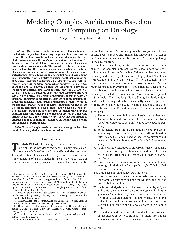摘要
We propose granular computing (GrC) on ontology as a solution to the problem of modeling complex architectures. We expressed the architectures formally as ontology domains, which include two components: the set of basic vocabularies and a knowledge library of rules. The set of basic vocabularies contains elements or basic architecture components. The knowledge library comprises rules that control the combination and construction of the basic elements. As the rules are often given by architectural experts subjectively, they may contain redundant, conflicting, and overlapping rules, especially in certain styles of ancient southeast Chinese architecture. It is difficult to distinguish or identify these rules; therefore, we apply the multilevel approach on ontology [Y. Liu, C. Xu, Q. Zhang, and Y. Pan, "Smart architect: Scalable ontology-based modeling for ancient chinese architecture," IEEE Intell. Syst., vol. 23, no. 1, pp. 49-56, Jan./Feb. 2008] and approximation theory of GrC. In this process, we present a measurement that is based on roughness functions to evaluate the degrees of approximation between the selected set and certain architecture domains. With the monotonicity characteristic of roughness functions, we can design a heuristic algorithm to select a suitable knowledge base (rule set) to assist in integrating the parts into final architectures, via several levels. Experiments with a real architectural project, i.e., modeling ancient southeast Chinese architectures, show that our method is effective and may simplify the design of the automodeling system and enhance its performance.
